Empowering students with language-based learning differences
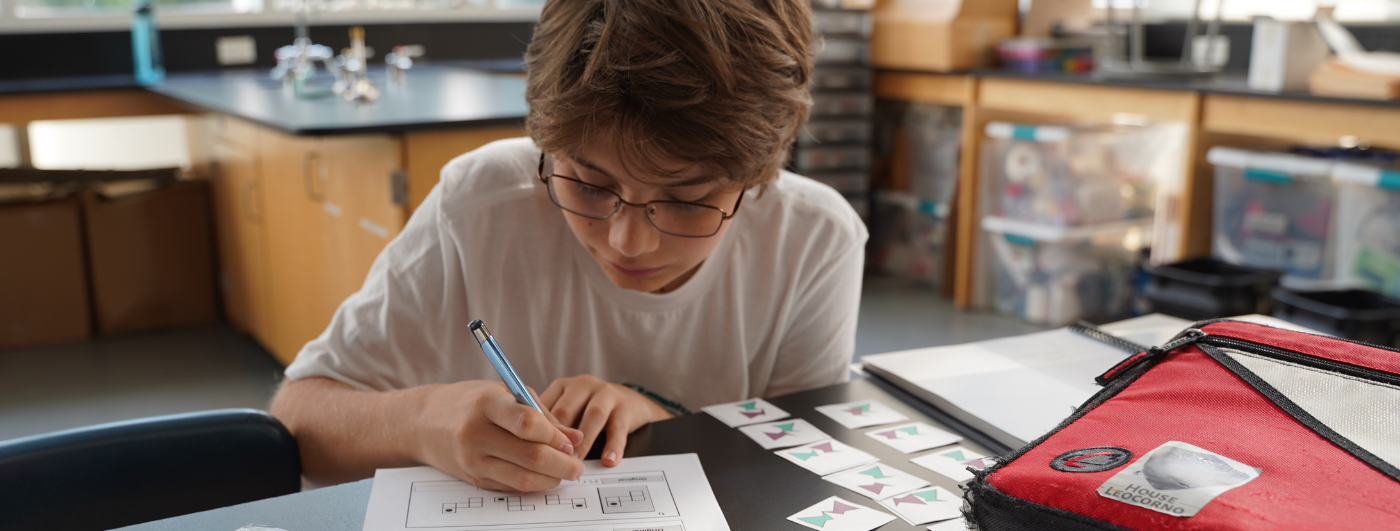
Siena Blog



The Siena School Blog
Discover, Learn, Celebrate, and Empower
Welcome to Siena's blog, your source for helpful, cutting-edge resources tailored to teachers, parents, and other advocates in the learning differences community. We are dedicated to providing a wealth of curated knowledge spanning various topics, ranging from dyslexia advocacy and awareness to classroom teaching strategies, heritage month profiles, and social and emotional health.
Discover innovative classroom strategies that inspire creativity and foster a love of learning.
Our commitment to social-emotional wellness ensures that we provide valuable insights into healthy student development and self-advocacy.
Discover resources, reading and podcast recommendations, volunteering opportunities, and more for parents in the LD community.
Our important heritage month posts highlight key people, offer reading and podcast recommendations, and more.
Fidgets in the Classroom
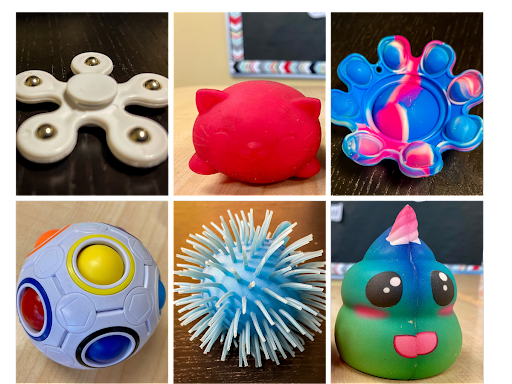
“I like fidgets because I can use them under the desk. I also like them because they give me a bit more focus and I won't be moving around too much.”
—Siena Middle School Student
“It’s always nice to have it nearby. It makes me feel better. It’s comforting.”
—Siena Middle School Student
Pop Its...squeeze balls...infinity cubes: these have come to be known commonly as fidgets, but a generation or so ago, they might’ve been seen as toys for a student to hide or a teacher to confiscate.
Although they can be counterproductive when misused, fidgets can also be highly effective tools for students with ADHD, anxiety, and other difficulties that affect their performance in class.
There’s ample research to support the benefits of fidgets for children and adults, particularly students with ADHD or sensory processing needs. Sydney Zentall, a professor of Educational Studies at Purdue, has written about the importance of multisensory activities accompanying a primary task (such as listening to music while writing a paper). This recent piece in ADDitude draws on Zentall’s work: “Intentional fidgets allow you and your child to self-regulate ADHD symptoms in a controlled, constructive fashion.” (See below for additional reading and resources.)
Siena Middle School Humanities Teacher Meredith Shinners follows this principle of controlled and constructive fidget use in her classes: “I love when students can appropriately use them to calm their bodies and give them some movement in their hands. Students are most successful with a fidget if it is a simple motion back and forth.” Both Shinners and Reading Teacher Leslie Holst strongly prefer fidgets that can be inconspicuous and used under students’ desks—that is, out of sight and out of hearing.
Holst adds an important caveat: “Fidgets are positive and constructive classroom tools only when respecting everyone else’s ability to learn.” So, how can fidgets be both beneficial to students themselves and not detrimental to those around them?
Why Students Use Fidgets
“I like the fidgets because they help keep me occupied and not space out.”
—Siena Middle School Student
When used appropriately as tools of grounding and self-regulation, fidgets such as these can be beneficial:
- Squeeze ball (e.g., an Isoflex grip ball)
- Therapy putty
- Infinity cube
- Fidget cube
- Pop It
- Baby Porcupine Ball
- Fidget jewelry (e.g., rings that double as manipulatives, or beaded bracelets from Old Soul)
- Elastic desk straps like Bouncy Bands
- Fidget stools (see these from Hokki and Kore)
For this elementary student, fidgets make her “de-stressed and calm” in physically redirecting any inner anxiety:
Inspired Treehouse reminds us that “Fidgets provide us with subtle movement and touch input that can help calm our bodies and keep our minds attentive, alert, and focused. Movement [is] a powerful component of focus and problem solving and fidgets provide an outlet for small movements of the hands while we work.”
There are clear benefits of movement for ADHD support in the classroom, including heightened alertness and better information processing. A wobble stool, for example, lets students move some parts of their bodies in a controlled, non-disruptive way (instead of pacing around the room or having to take frequent walks in the halls). Regular movement and multisensory learning are integral to Siena’s approach to teaching, so fidgets in the classroom are often another way to maximize learning and performance.
For students with anxiety, there’s comfort in knowing that their fidgets are there, even if they don’t need to use them for focus when working. One middle schooler made her own squeeze ball (a balloon filled with beads) and finds it “nice to use” for calming and focusing during class. Different textures and colors can additionally help anxious students ground themselves.
Teacher Advice for Fidgets in the Classroom
“For the most part, they use them appropriately to help them focus. We try to limit it to 1 fidget per student so that things don’t get lost in the mix.”
—Shannon Robichaud, Siena Elementary Teacher
Siena teachers understand the benefits and risks of fidget use—such as when it becomes the primary focus instead of the teacher and their lesson. The more that students understand that an infinity cube or fidget stool is a tool to improve focus and assuage anxiety, the more their fidgets won’t become toys to distract them or their classmates from learning. Instead, the tool helps them channel extra energy in productive, classroom-appropriate ways.
When fidgets are used constructively and respectfully in a classroom, they can improve students’ focus, performance, and self-regulation. Shinners suggests that teachers implement clear policies for fidget use and misuse: “Fidgets can’t be a visual or auditory distraction to anyone, so students can use silent fidgets under the desk. We talk a lot about how fidgets become toys if you’re looking at and playing with them, so they get put away.”
There’s an important learning trajectory that Siena students follow from elementary school through middle and high school with regard to fidgets. An elementary or younger middle school student might not realize that while their fidget cube calms them, it can irritate their classmates due to the clicking noise. In both learning how to learn and how to respect others’ learning while at Siena, students gradually develop the higher-level thinking to be aware of how their actions and body movements affect others.
“Students are still learning the socially acceptable ways to maintain their attention or manage their anxiety in the classroom,” Holst notes. “8th graders and high schoolers are generally better at using fidgets to maintain their attention or calm their anxiety. They understand the connection between the object and how it makes them feel.”
Resources for Fidgets in the Classroom
25 Best Fidget Toys and Devices For a More-Focused Classroom (2021)
ADHD Fidgeting Builds Focus: Body-Brain Connections (2021)
ADHD Fidgeting Strategies That Promote Focus (2021)
The Guide To Introducing Fidgets To The Classroom (2021)
Fidgets are Tools, Not Toys (2019)
17 Ways to Help Students With ADHD Concentrate (2018)
How to Introduce Fidget Toys in the Classroom (2017)
Teacher Tip: The Dos and Don’ts of Fidgets for Kids (2016)
10 Solutions for Students Who Fidget in the Classroom (2015)
Distance Learning Space Setup: Value Your Student’s Input
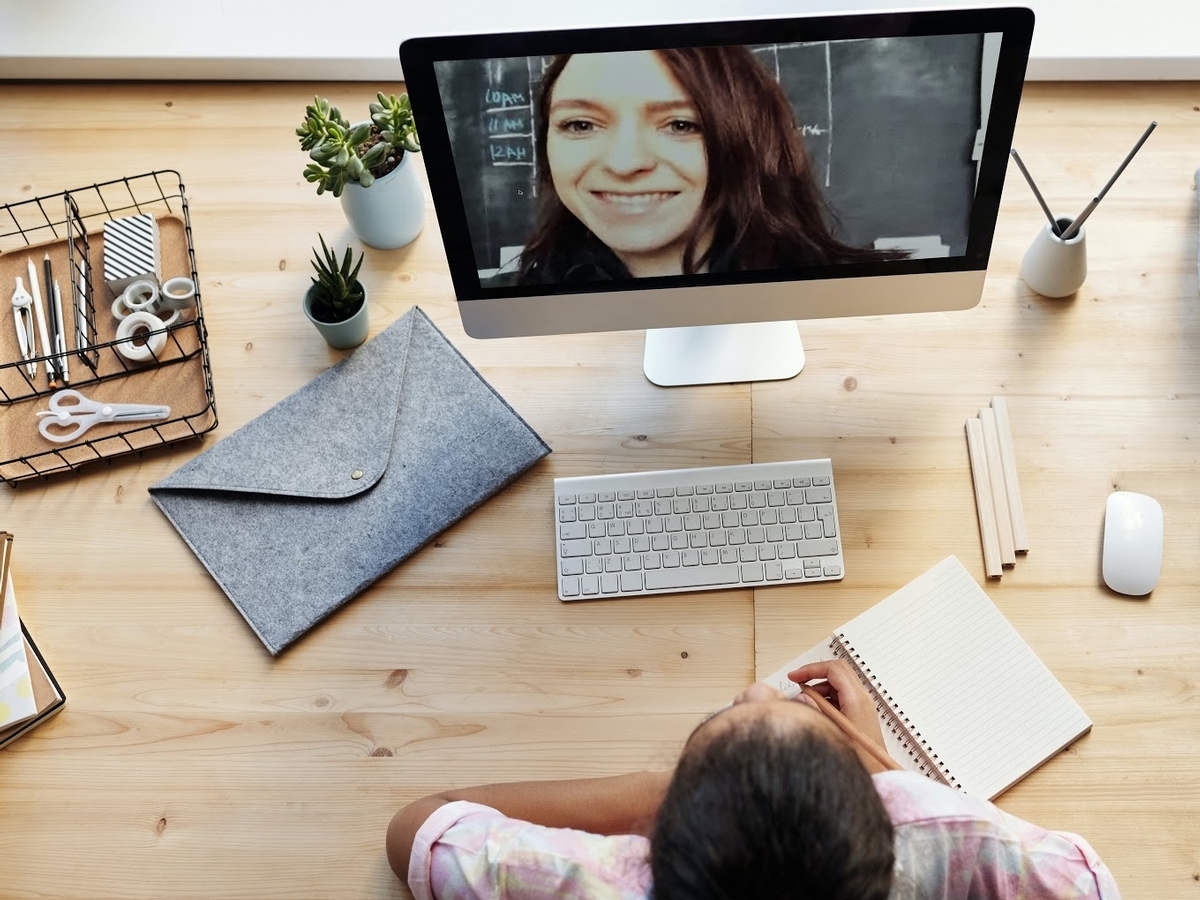
Preparing for your student’s first day of school and year looks very different than past years. Instead of looking for a new backpack and lunch box, you are searching for an optimal space for your child to learn at home, in addition to gathering supplies that not only will help them learn but also make their learning environment inviting and fun.
Preparing Home Learning Spaces
As you prepare your student’s more permanent learning space in your home, are you considering what this looks and feels like for them? Have students reflect on what worked well for them this past spring; it will be meaningful to check in with them about possible changes to their learning spaces that can help them both academically and emotionally.
Depending on your child's age, you may use all or some of these questions and conversation starters:
- How do you best learn?
- Where in the house do you want to do school daily?
- What would be most comfortable for you?
- Do you need to have a variety of different positions and locations to learn? How could you help create a flexible learning space?
- Do you need to move all or part of your body during school?
- Do you want to be by yourself or with another person when in school?
- What will be distracting for you? What will help you focus during school?
- What supplies/materials do you need and want for your learning space?
- How do you want to organize those supplies?
- What rules or boundaries should we have for computer usage, beyond your school’s rules?
- Is your child left-handed? If so, read this Siena School blog post on left-handers learning from home.
- What will remind you daily to smile?
- Something from school?
- A family picture?
- A childhood memento or knickknack?
- A stuffed animal?
Distance Learning Ideas
When you have this conversation with your child, enter it with a mindset of collaboration, with each of you a member of a team working towards an outcome of establishing the best learning space for them this year. Most importantly, have fun working on this project together.
For ideas to engage with your child in this conversation, read this New York Times article by Melanie Pinola. She not only gives great ideas for establishing this space and its boundaries but also provides links to possible supplies that may help set up your child's learning environment. For a refresher on distance learning tools and tips, read Ms. Darefsky's March blog post on distance learning ideas and tools.
10 Experiential Self-Care Lessons in a School Day

Stress management and self-care tools are needed for our students in normal times, but it’s especially important to offer these tools now.
How do we as educators and counselors keep teaching students about self-care and stress reduction when so much has changed—and continues to do so? When possible, practicing the following exercises virtually alongside our students allows them to feel the benefits in the moment and take them outside class time.
![]() Mindful breathing: While teaching the biology of deep breathing and its activation of the parasympathetic nervous system can be helpful, practicing the following breathing exercises can allow students to feel a sense of calm immediately after the practice. Some breathing exercises to note are:
Mindful breathing: While teaching the biology of deep breathing and its activation of the parasympathetic nervous system can be helpful, practicing the following breathing exercises can allow students to feel a sense of calm immediately after the practice. Some breathing exercises to note are:
- 4-7-8 breathing,
- 5-finger breathing,
- shape breathing (such as square breathing),
- hand tracing breathing,
- infinity breathing,
- extending the exhale by one or two breaths,
- taking 10 deep breaths.
![]() Progressive muscle relaxation: You can guide students through a brief relaxation exercise of tensing specific muscle groups and then relaxing that muscle group completely. Continue this from head to toes. This is a great stress reliever that students can easily do on their own.
Progressive muscle relaxation: You can guide students through a brief relaxation exercise of tensing specific muscle groups and then relaxing that muscle group completely. Continue this from head to toes. This is a great stress reliever that students can easily do on their own.
![]() Mindfulness: There are numerous ways to practice mindfulness, many of which our students might be doing every day. Grounding exercises help students better understand the concept of paying attention to the present moment without judgment. A simple way to introduce the concept of mindfulness is to have students practice the 5 senses by naming:
Mindfulness: There are numerous ways to practice mindfulness, many of which our students might be doing every day. Grounding exercises help students better understand the concept of paying attention to the present moment without judgment. A simple way to introduce the concept of mindfulness is to have students practice the 5 senses by naming:
- 5 things they can see,
- 4 things they can hear,
- 3 things they can feel,
- 2 things they can smell, and
- 1 thing they can taste.
![]() Positives: Research has shown us that when people list 3 Good Things that happened during their day for a period of at least two weeks, they have lower stress and anxiety. Having students list 3 Good Things, big or small, regularly encourages them to focus on the positives in their lives. For instance, Siena teachers and students shared some early positives from our move to distance learning.
Positives: Research has shown us that when people list 3 Good Things that happened during their day for a period of at least two weeks, they have lower stress and anxiety. Having students list 3 Good Things, big or small, regularly encourages them to focus on the positives in their lives. For instance, Siena teachers and students shared some early positives from our move to distance learning.

![]() Gratitude: Ask students to write a letter of gratitude during a class and what they appreciate about a person, object, topic—or even themselves.
Gratitude: Ask students to write a letter of gratitude during a class and what they appreciate about a person, object, topic—or even themselves.
![]() Emotion check-in: Create a routine in which students label how they are feeling. This can be done through a Google form or in other creative ways; educators can offer new emotional vocabulary to help students expand their (evolving) feelings.
Emotion check-in: Create a routine in which students label how they are feeling. This can be done through a Google form or in other creative ways; educators can offer new emotional vocabulary to help students expand their (evolving) feelings.
![]() Controlling what they can: Ask students to draw a circle on a page and write things they can control inside the circle: e.g., their attitude, their perspective, their hygiene, their next meal or drink, how they spend their time, how they care for themselves, and so on. On the outside of the circle, ask students to write things they cannot control at this time; e.g., how others act, the virus, when things will open, etc. Identifying what they can and can’t control can help assuage students’ anxiety, as well as ground them in the moment.
Controlling what they can: Ask students to draw a circle on a page and write things they can control inside the circle: e.g., their attitude, their perspective, their hygiene, their next meal or drink, how they spend their time, how they care for themselves, and so on. On the outside of the circle, ask students to write things they cannot control at this time; e.g., how others act, the virus, when things will open, etc. Identifying what they can and can’t control can help assuage students’ anxiety, as well as ground them in the moment.
![]() Creative projects: Often when students engage in creative endeavors, they are naturally practicing mindfulness. After working on a project, ask students to reflect on how they felt while doing it.
Creative projects: Often when students engage in creative endeavors, they are naturally practicing mindfulness. After working on a project, ask students to reflect on how they felt while doing it.
![]() Movement: Whenever possible, add movement into your lessons. For example, there are many chair yoga poses or other quick bursts of movement that students can do. See this blog post from Siena for how teachers keep students (and themselves!) moving during online classes.
Movement: Whenever possible, add movement into your lessons. For example, there are many chair yoga poses or other quick bursts of movement that students can do. See this blog post from Siena for how teachers keep students (and themselves!) moving during online classes.
![]() Self-care: Ask about your students’ self-care routines. Encourage them to name ways they take care of themselves. Normalize self-care and allow students to share this with one another; hearing from their peers may just encourage them to adopt a new tool. If they’re reticent about sharing, consider giving them some suggestions based on your own self-care techniques. (See below for an example of a weekly wellness challenge.)
Self-care: Ask about your students’ self-care routines. Encourage them to name ways they take care of themselves. Normalize self-care and allow students to share this with one another; hearing from their peers may just encourage them to adopt a new tool. If they’re reticent about sharing, consider giving them some suggestions based on your own self-care techniques. (See below for an example of a weekly wellness challenge.)
Anxiety management and attention to mental health will continue to be important in the coming weeks and months. Getting students to think now about self-care and anxiety management not only helps them finish the school year; it also sets them up for similar practices in the summer when they might miss the structure of school.
As teachers, counselors, parents, and others in students’ support networks are caring for our whole selves, we can keep ensuring that students know how to care for themselves and others.

Ensuring Student Engagement through Distance Learning
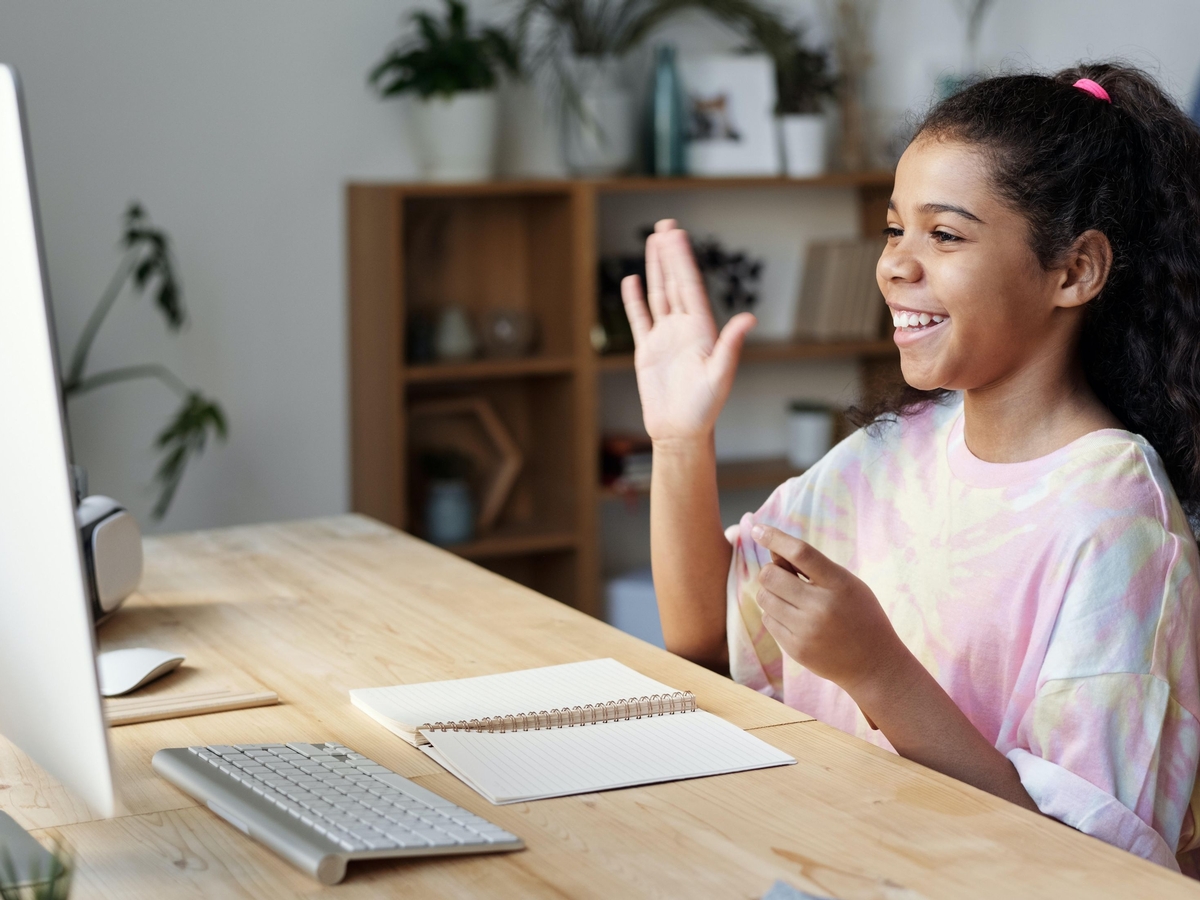
I know my students are engaged when their eyes light up and they can’t sit still while waiting their turn to contribute ideas! — Siena teacher
A key tactic for me is to try to get my students to laugh. If they laugh at my jokes, it means they are really with me. — Siena teacher
In the classroom and online, ensuring that students are engaged is always important for teachers. Using multisensory teaching methods and getting students (and themselves) moving helps teachers maintain engagement, especially during distance learning.
Student Engagement in Online Learning
But what does an engaged student look and sound like remotely? Siena's teachers shared their top suggestions. Here are some ways that teachers could be looking and listening for engagement to assess whether students are taking initiative and feeling invested in the material:
![]() Verbal Cues
Verbal Cues
- Asking engaging or clarifying questions
- Excitedly sharing their work
- Participating in discussions
- Quickly responding to questions and/or providing thoughtful answers
- Eagerly volunteering to read out loud, share what they’ve written, and/or respond to a question
- Giving good verbal feedback to classmates, as well as personalizing responses
- Directly asking for individual assistance via breakout rooms, chat, or after class
![]() Visual Cues and Body Language
Visual Cues and Body Language
- Looking (and smiling) at the computer screen
- Raising hands to speak, waving, or giving a thumbs up
- Laughing and/or moving at appropriate times
- Leaning forward when they’re excited to talk
- Nodding or shaking their heads when agreeing or disagreeing with classmates
- Holding up or showing work they want to discuss
- Standing up to signal they’re done with something a teacher has asked them to do
- Smiling at a joke (even if it’s terrible)
- Signing “I agree” (ASL with thumb and pinky extended)
- Signing “I have something to add” (ASL with fists on top of each other, used when a student wants to add on to a discussion)
- Raising their index (“pointer”) finger to show they have a point to add
- Not having the telltale bluish glow from another device on their faces
![]() Actions Showing Initiative
Actions Showing Initiative
- Keeping up with the notes or shared Google Doc and helping their peers
- Having productive conversations in Zoom breakout rooms
- Eagerly showing that they’ve met a class goal
- Wanting to share anecdotes about their distance learning experiences
- Sharing clear, thoughtful responses in learning platforms like Kahoot or Pear Deck
- Utilizing the reaction emoji through Zoom
- Requesting individual teacher feedback in person and then scheduling a meeting time
- Enthusiastically reading aloud and then saying “Pass” (the next person must pick up where they left off)
- In general, teachers agree that students’ expressions go with the lesson: if there’s sudden laughter or their eyes are regularly off screen, they’re probably not as engaged as they should be.
Strategies for Increasing Student Engagement
Here are some engagement checks and strategies that teachers can do when they’re not in the same physical space as their students. These can be adapted for various class topics and sizes:
- Regularly polling students informally, such as by asking for a fist-to-five rating of how well they understand the material
- Asking students to respond to a check for understanding with a thumbs up (“I get it!”), thumbs down (“I don’t get it”), or thumbs sideways (“I sort of get it”)
- Stopping the lesson a little early to parse out students who need additional clarity or instruction; offering an individual or small breakout session for those needing help
- Giving immediate feedback on assignments or other student-created material (which helps with retention)
- Adding voice comments to provide further feedback to a Google Doc; having the students respond in kind
- Asking students to participate in a content-based scavenger hunt (which also gets them moving)
- Having foreign-language students (1) conduct interviews in whatever language they’re studying and (2) develop vocabulary list based on items in their home (optional: sharing pictures of the items)
- Arranging student-led discussions for a given week
- Letting some students do independent work, while others have a discussion in a breakout room (teachers can then flip the groupings after 10–15 minutes)
- Asking students to share their screens for everyone to see a project they’re working on
- Creating a master reference document for students to collaborate on
- Encouraging book club sharing to get students both reading and talking enthusiastically about what they’ve read. (Optional: the host can spotlight the video of whichever student is reading or presenting.) This helps students know they’re being seen and heard in a virtual classroom.
- Developing assignments that ask for creativity and engagement with the text in a book or other reading; creating buzzwords that require inflection or particular phrasing
- Deciding on actions for certain words—in particular for read-aloud activities—and then having the students perform the action whenever they hear the word
- Employing grammar lessons to create movements associated with punctuation—e.g., clapping at periods, snapping fingers at commas
On Zoom, teachers can create multiple breakout rooms to provide more individualized instruction and offer clarification to small groups. Teachers can also use learning sites such as Kahoot and Extempore to maintain (or increase) student engagement.
Visit our website for more of Siena’s distance learning resources, including blog posts about teaching math and art remotely and using technology effectively in science classes.
Embodying Movement in Online Learning
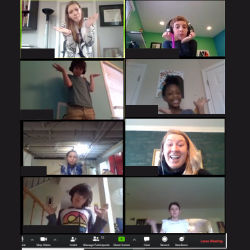
How can teachers and students keep things moving—literally—during distance learning?
Daily active movement in each lesson, especially during distance learning, should involve the whole body, balance, and cross-lateral movement activities to awaken the brain to learn and help to anchor what is learned. This movement will get the different regions in the brain “talking” with each other so that information may be stored within the brain’s network.
Physical activity is integral to multisensory teaching. There are many simple yet effective methods for distance learners and teachers to move. Here are some helpful, adaptable ways that Siena’s teachers have kept themselves and their students mobile:
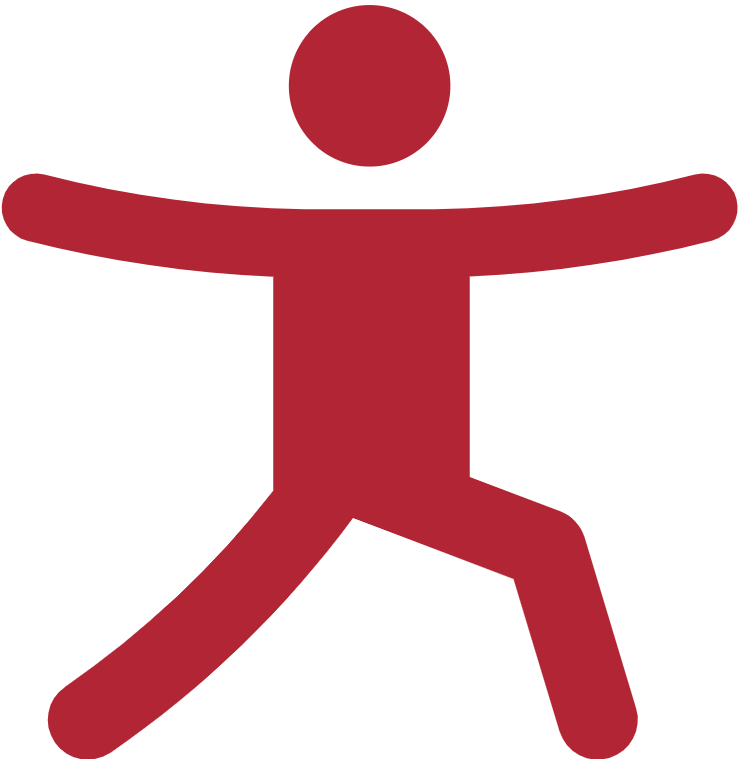 Movement While Learning
Movement While Learning
- Pose yes/no or true/false questions and have students move to answer—such as by putting their hands on their heads for yes/true or on their shoulders for no/false. This works for multiple-choice questions as well, with each corner of the screen indicating an answer.
- Teachers can associate key terms, people, or ideas with different physical actions. For example, English teachers could have students jump up and down if they sympathize with a character’s motivations or stand on one foot if they don’t sympathize. Science teachers could have students crouch, stretch, or rotate their arms to mimic important principles (e.g., how protons, neutrons, and electrons behave).
- A short scavenger hunt to search for specific items can be a fun way to grasp a class concept. (Be sure to set time limits for the object hunting, though.) For example, art teachers could task students with finding an image or object related to a concept or artist.
- Physical analogs for concepts help students “act out” their learning. For language arts or reading lessons, have students stand when emphasizing a syllable, punch out syllables in the air or tap them on their chins, write a word or letter in the air, or trace it on their tabletops. Ask students to position their bodies in the shape of the letters to spell out each new vocabulary word. Teachers can encourage students to move with the melody or tempo of a song being shared.
- Use a whiteboard or notepaper as part of a learning game. Teachers can ask students to move several steps back from the computer. After the teacher asks the question, students have to rush up to their whiteboard or notepaper, write down the answer, and hold it up.
 Warm-Ups and Exercise
Warm-Ups and Exercise
- Use a Google Form quiz and have one of the questions be “Stand up and do 10 jumping jacks,” which students could do and then click “done” when finished. Foreign language classes could have student-led exercise classes, incorporating new commands and vocabulary.
- Try trashketball. Ask questions about the lesson and have students write their answers on a whiteboard. If they get the answer right, they can throw a ball or balled-up paper into a receptacle for a bonus point.
- Charades or pantomime are good for fun movement and vocabulary review. Teachers can have students make a shape that reflects a theme of the day, animals, personality, sports, etc.
- Use an online dice roller or spinner, assign an exercise to that number/color like jump, spin, one-leg hop, squat, stomp or skip.
 Brain Breaks
Brain Breaks
- Energizers like “Simon Says” can be used for mini-breaks to keep the students moving.
- Students could find and touch ten items in their learning area that match an announced color or start with a certain letter.
- Cross Laterals help both sides of the brain talk with each other. “Pat your head and rub your belly” is an example of a crossover activity. Many of these are used in Brain Gym.
- Have a student lead a short opening or midway-point yoga stretch. They could also try a brief exercise competition: Who can hold the longest wall sit? Who can balance on one leg the longest?
- Reimagine paper-rock-scissors as movements related to class material.
- Breakout rooms can be used to make teams and play Heads Up! using the “Act It Out” category.
 Presenting and Performing
Presenting and Performing
- Students (and teachers!) can stand up whenever they’re reading out loud or sharing their opinion.
- Students can create skits or act out a scene from their readings—maybe through Zoom or by creating a video to submit and share using Screencastify.
- In elementary language arts classes, students can march while working on grammar lessons. They could read a sentence aloud and then act out specific motions to represent where they think punctuation should be in a sentence.
 Online Resources
Online Resources
- GoNoodle and Brain Gym can help teachers further integrate movement into their lessons.
- Aching Back Among Online Students and 10 Chair Yoga Poses for Home Practice are helpful to break up long stretches of sitting.
Making learning more physical makes teaching more effective, as well as fun. This powerful tool will help to stimulate your students’ minds and embody learning. Visit our website for more of Siena’s distance learning resources, including blog posts about teaching math and art remotely.

Thank for the additional great ideas that I can add to my repertoire of ideas some of which I have done like Picture dictionary using Art quotes, vocabulary, Famous Artists.; Periods in Art.